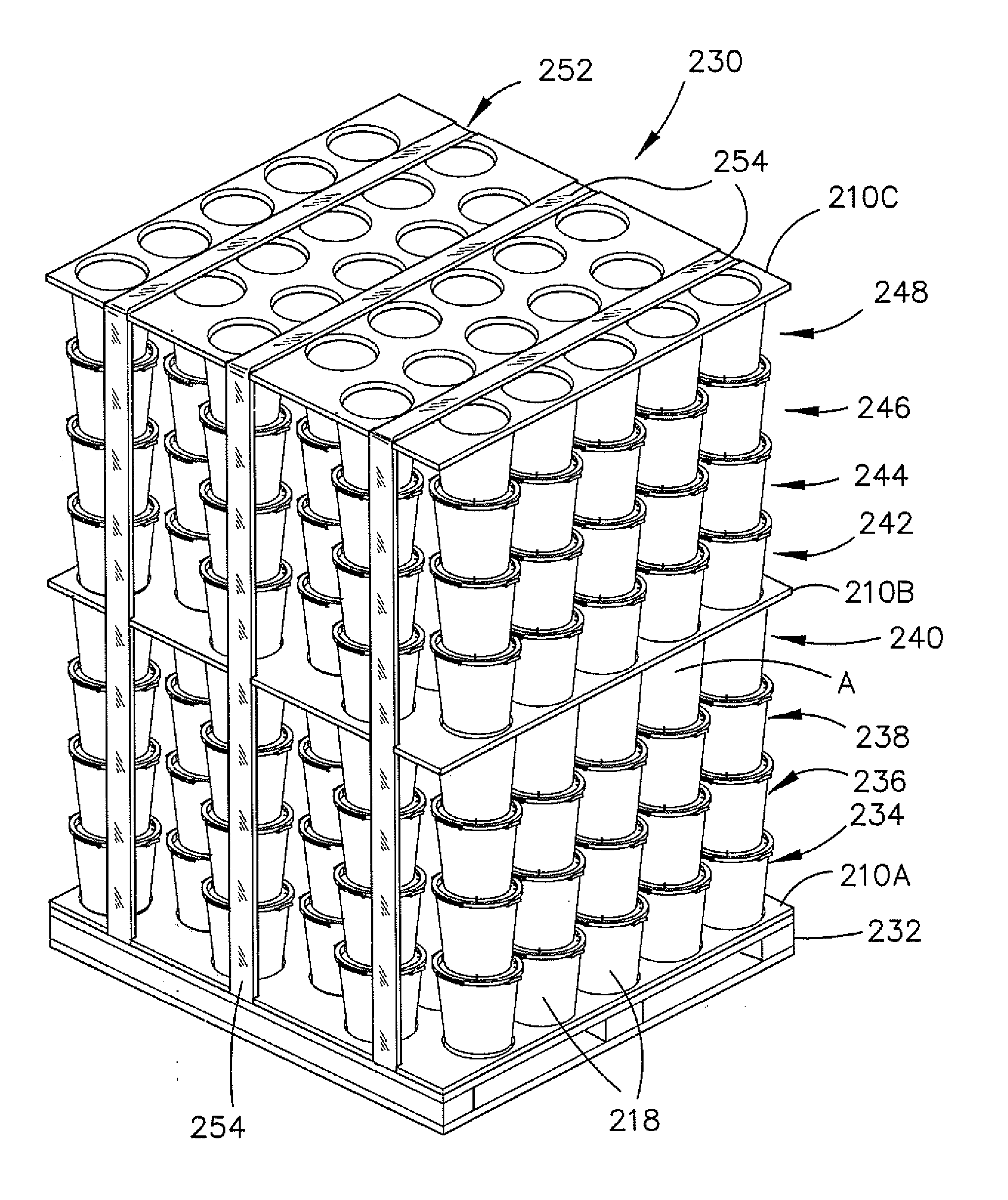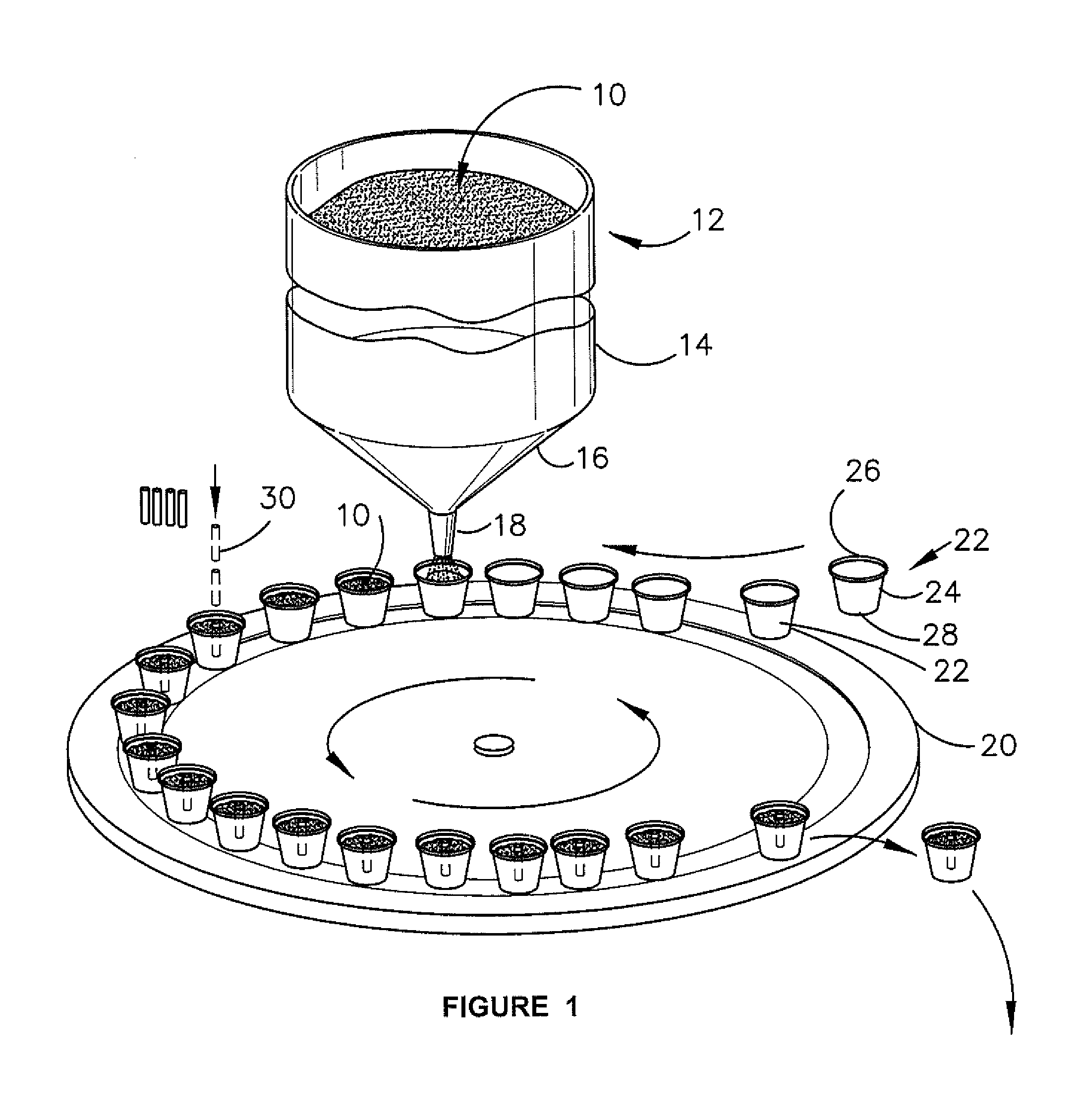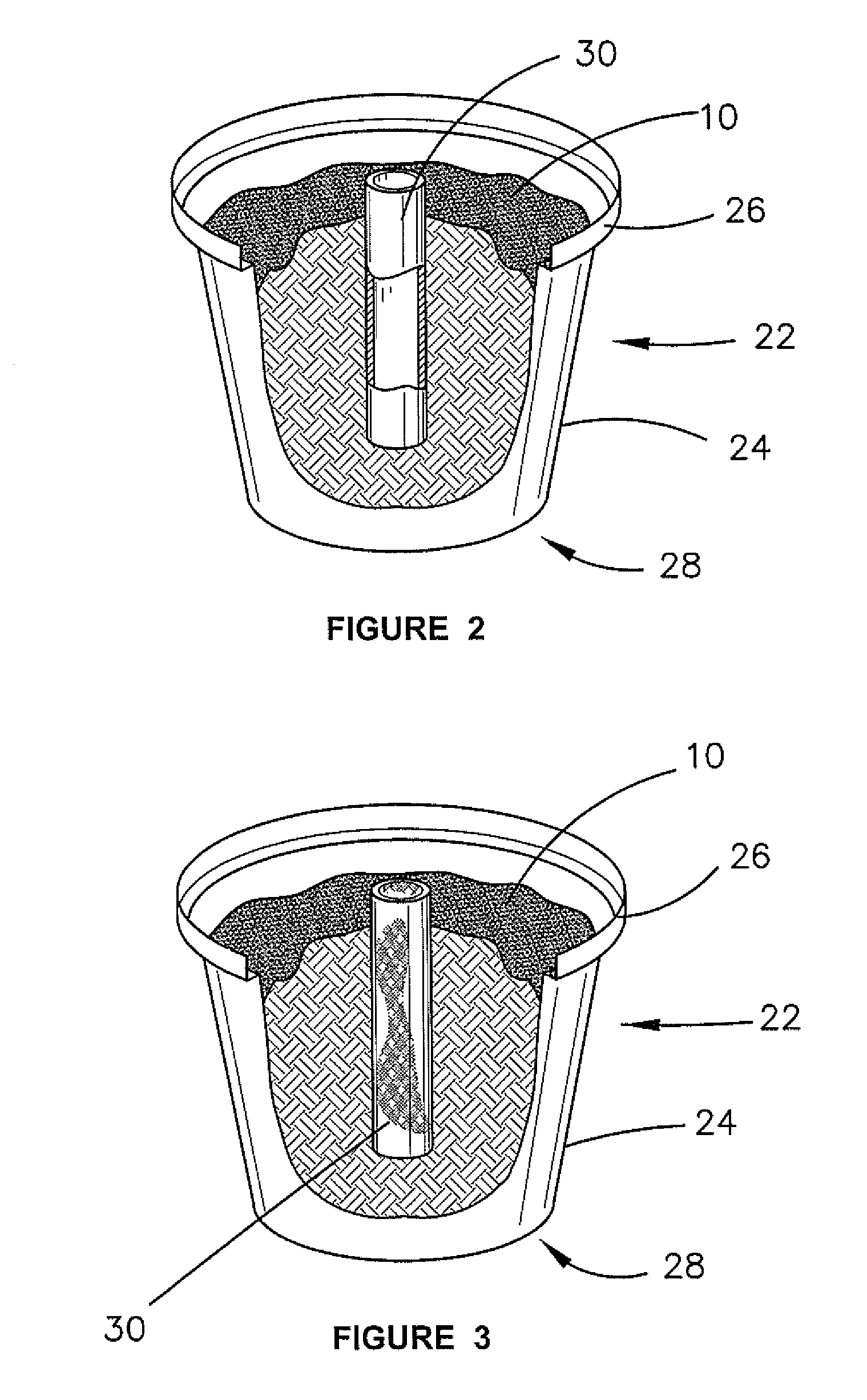Stackable containers and associated method for the transport of plants
a technology of plant storage containers and storage containers, which is applied in the field of plant storage containers and associated methods for the transport of plants, can solve the problems of lack of coordination, difficulty in arrangement, and duplication of effort, resources, and cost for individual growers to plant and/or transplant their own growing items
- Summary
- Abstract
- Description
- Claims
- Application Information
AI Technical Summary
Benefits of technology
Problems solved by technology
Method used
Image
Examples
Embodiment Construction
[0109]Forms of embodiments of aspects of the invention will now be described.
[0110]A suitable plant growing media, such as for example, a compost, a potting mix, or other granulated material in which plants can be grown is formed in bulk is prepared, such as for example, by mixing a number of individual components to form a formulated plant growing material at a suitable location. Optionally, the formulated material is allowed to stand for a period of time to mature until the product can be used. One example of the plant growing media is a potting mix in which growing plants may be planted and grown. The potting mix can be formulated by adding ingredients or components depending upon the type of plant to be grown in the potting mix. The present invention will be described with particular reference to a potting mix for ease of description. However, it is to be noted that any suitable plant growing material has application in the present invention, including naturally occurring materi...
PUM
 Login to View More
Login to View More Abstract
Description
Claims
Application Information
 Login to View More
Login to View More - R&D
- Intellectual Property
- Life Sciences
- Materials
- Tech Scout
- Unparalleled Data Quality
- Higher Quality Content
- 60% Fewer Hallucinations
Browse by: Latest US Patents, China's latest patents, Technical Efficacy Thesaurus, Application Domain, Technology Topic, Popular Technical Reports.
© 2025 PatSnap. All rights reserved.Legal|Privacy policy|Modern Slavery Act Transparency Statement|Sitemap|About US| Contact US: help@patsnap.com



